Ever since the earliest times there has been the challange of moving goods safely to market and to consumers via trade routes that were vital to sustaining the ancient empires.
Ships were the most effective forms of transport with their ability to carry significant cargoes compared with mule trains, or ox and cart.

Goods were transported thousands of miles from the far flung parts of the empires, to the capital cities to provide the nobility and rulers with varied produce, animals, slaves etc.
Nowadays, the global economy relies on the transit of goods worldwide in huge volumes.
Some cargo volume statistics
The volumes of goods transported around the world are huge. Seaborne freight transports the vast majority of goods accounting for 11 billion tonnes, and the bulk of this is to and from Asian seaports.
In 2018, developing economies still accounted for the largest share of global seaborne trade, both in terms of exports (goods loaded) and imports (goods unloaded). They loaded 59 per cent and unloaded 64 per cent of the world total.
At the end of 2019, there were around 61,100 vessels in the world trading feet, with a total deadweight tonnage of 1,966 million DWT. By deadweight tonnage, the world feet has nearly doubled in size since 2005 and despite the growth slowing in recent years, it has still increased by 4% since 2018.
In comparison air freight tonnage accounted for 63.7 million tonnes in 2018, a tiny fraction in volume, but a far larger proportion in value. Air freight is used for perishable goods such as fresh salmon, and as an example, diamonds, hence the higher value per tonne.
Containerisation
The invention of shipping containers transformed the shipping of goods by land and sea.
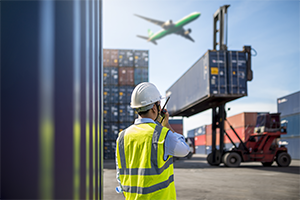
Malcolm Purcell McLean (November 14, 1913 – May 25, 2001; later known as Malcom McLean) was an American businessman. He was a transport entrepreneur who developed the modern intermodal shipping container, which revolutionised transport and international trade in the second half of the twentieth century.
Do not try this at home!!
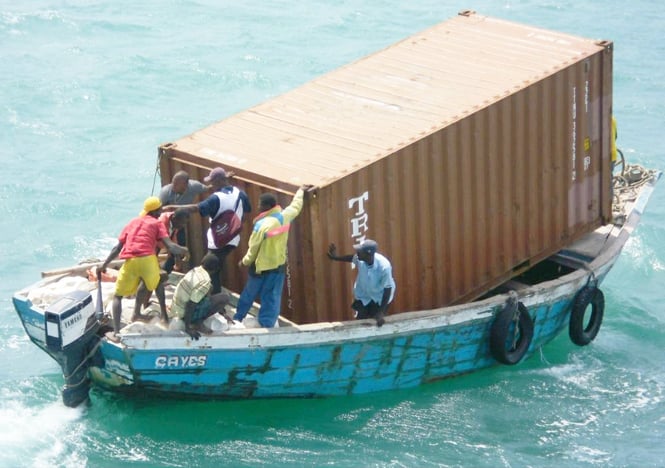
Containerisation has led to a significant reduction in the cost of freight transportation by eliminating the need for repeated handling of individual pieces of cargo, and also improved reliability, reduced cargo theft, and reduced inventory costs by shortening transit time.
Air freight utilises a range of ULD (UNIT LOAD DEVICE) containers which are designed to fit into the cargo holds of passenger and freighter airplanes. These are essential for ensuring the goods are securely held in the aircraft so they do not move in flight potentially destabilising the aircraft.
What can go wrong?
Well, quite a lot it seems. There are some things that we can do nothing about. Extreme weather can cause cargo to be lost overboard, ships can founder, aircraft can crash.
But there are some things we can do to prevent damage in transit. Here are some issues that can arise in transit
Unstable loads: Cargo can move in shipping containers if there are empty spaces between goods.
Temperature fluctuation: Temperatures inside a shipping container can vary dramatically as a ship moves from temperate to tropical climates, and day and night temperatures can vary considerably, especially if a container is exposed to the sun.
Condensation: Container rain as it is know is caused by temperature changes which converts humidity into water droplets which in turn will fall onto the cargo causing potentially serious damage.
Bird strikes: This is a specific problem when shipping perishable goods, mainly fish, and while a pallet is waiting to be loaded onto aircraft, it can be attacked by birds resulting in loss.
Some solutions
Unstable loads. It is standard practice to ensure air freight loads are secure for safety reasons and this will be done by the freight forwarder. It isn't critical for shipping containers.
There are several ways to achieve this and you can find out more HERE.
This includes the use of inflatable dunnage bags as shown below.
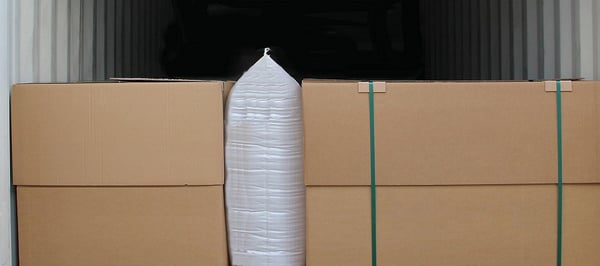
Temperature fluctuation: Depending on the goods being shipped, temperature changes may or may not be an issue. Obviously if you are shipping chilled or frozen products, then you will utilise a 'reefer', or a refrigerated container.
To reduce the impact of temperature changes you can use metalised foil pallet covers, or a foil container liner.
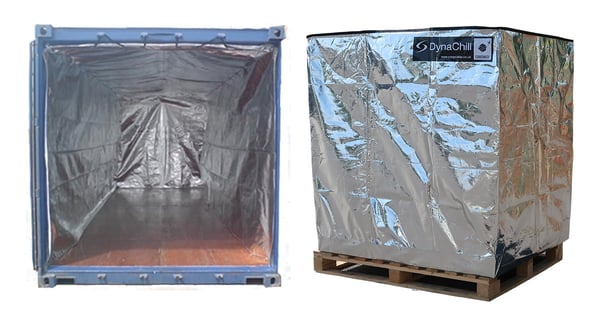
Ice gel packs are used in conjunction with foil covers and liners, and these are frozen prior to use, and are placed around the temperature sensitive goods to ensure for up to 72 hours.
Condensation: there are a couple of solutions for managing condensation, and they can be used together for added protection.
Waterproof absorbent sheeting otherwise known as 'nappy' in the aircargo industry, can be used to cover goods in the container and this absorbs up to 5 litres of water per square metres and has a waterproof lining to contain the moisture and protect the load.
Dessicant sachets can be placed in and around the cargo to absorb the moisture in the air to help to prevent condensation forming. Guidelines are available to calculate how much dessicant will be required.
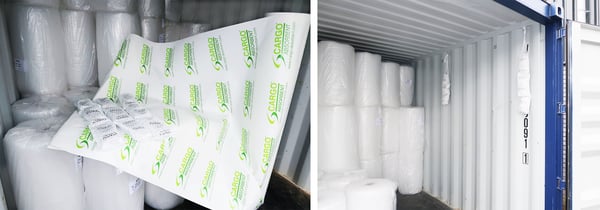
Bird strikes: this is a problem that is specific to air freight of perishables, particularly live and fresh seafood, and the use of foil pallet covers which were primarily used for temperature control, but also had the benefit of protecting the goods from seagulls while waiting on the tarmac to be loaded onto the aircraft, and protection from the weather.
So what to do...
Action can be taken to minimise damage to cargo. 10% of all cargo transported by shipping containers is damaged by moisture. The cost of preventing this is not high and is easy to implement.
Dunnage bags are available in multiple sizes and are easy to put in place and inflate thereby stabilising loads.
Thermal foil covers and liners can reduce the effects of temperature changes surprisingly well due to their multi layer construction, and can be crucial in ensuring food products travel and arrive in perfect condition. Chocolate is an example of a product that is sensitive to hot and cold, but needs to be kept at ambient temperatures to ensure it doesn't discolour or change its texture, or worse, melt.
Of course, there may be the challenge coming up of huge quantities of COVID19 vaccines needing transportation and these may well require their temperature to be maintained between 2°C and 8°C. They will be required urgently around the world so this will require air freighting. So there will be some work to be done to find a solution.
As with all these solutions, companies will have to carry out tests and transit trials which should be documented, and successful trials should lead to documented procedures for use of tempertaure control or moisture control solutions.
Remember, you can seek advice from the companies that sell these products. They will be able to advise and steer you in the right direction based on past experience and trials carried out with their clients.

